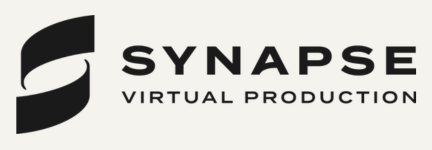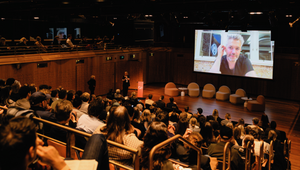
Creativity Has “Tumbled Down” CMOs’ To-Do. Ad Council Wants to Correct That

Proving creativity drives measurable business growth is the Advertising Council Australia’s (ACA) key priority, as it looks to transform advertising into the “most valued professional services industry in Australia” and correct the fact creativity has “tumbled down” marketers’ list of priorities.
Chair of the board, Michael Rebelo, told LBB of his agenda to “foster the long-term prosperity of the industry” ahead of This Way Up, the ACA’s three-day festival championing creativity, which starts today in Sydney.
Achieving that goal is Michael’s “number one duty”, but has become increasingly complex as artificial intelligence and an influx of independent agencies disrupt the market, a spate of long-term network agency CEOs leave their posts, and regional and global forces loom, such as the creation of Omnicom Oceania and Omnicom’s acquisition of IPG.
Publicis Groupe’s regional CEO said the board is considering how to “create greater synergy and correlation between creativity and business impact” by pulling together the Effies (the effectiveness awards and program), AWARD (the organisation at the helm of AWARD School, various training programs, and creative show AWARD Awards), and This Way Up.
ACA CEO, Tony Hale, noted chief marketing officers have “got a really tough life” and are charged with navigating a broader and deeper remit than ever before. As a result, “There's a real risk that creativity can almost be a nice to have. It can be tumbled down the lane of priorities, and that's just not acceptable. Because we know there's a direct correlation between creativity and effectiveness.
“When I'm talking about effectiveness, I'm talking about in-market effectiveness. I'm not talking about the lightweight metrics that a lot of people refer to, which is clicks, engagement, shares, impressions, because they might be valid measures of efficiency, but they're not valid measures of effectiveness. In-market effectiveness is change of attitude and change of behaviour.
“Unless you bring them [creativity and effectiveness] together closer … there's a real risk it'll continue to tumble down the day-to-day priorities.”
Michael promised, “You'll see some new announcements in the coming months around how we are looking to do that in 2026 and beyond.”
The ACA board, led by Michael, introduced its three-year strategy in May, focused on three pillars: ensuring a thriving people and culture; elevating creative impact; and building sustainable advantage. In order to ‘elevate creative impact’ the council said it would expand the definition of creativity. Mandie van der Merwe, AWARD chair and co-CCO at Saatchi & Saatchi, said the current definition is too executional, and not focused enough on business impact.
“Creativity must be seen as more than just ads or cool campaigns,” she said.
“Ultimately, we exist to solve problems, build brands, and create societal impact. So it was felt that the current definition often limits creativity, focusing too narrowly on execution. And we all believe that, today, creativity requires strategic thinking, cultural relevance, emotional intelligence, and all of these things, but we're doing it to drive consumer behaviour and business growth. So the ACA's push to expand this definition is quite literally crucial.
“We're navigating that intersection between technology, culture, and brand purpose more than I've ever experienced before. So by broadening this definition, I feel like we're acknowledging creativity's power in driving real business outcomes.”
“Need to Move Past [AI] Fear”: This Way Up
In 2021, the Ad Council launched This Way Up, a multi-day event designed to gather and celebrate the local industry, and expose it to world-class creative thinkers.
This year’s festival starts today at the Australian Chamber Orchestra Space on Sydney’s harbour, headlined by Uncommon founder and chief creative officer Nils Leonard. Today’s programming also features two Work Behind the Work sessions, plus an interactive AI workshop led by Leonardo.ai’s Jessie Hughes.
Mandie said it’s crucial for local creatives to hear from the likes of Jessie, who has “a message that our industry needs to hear, because we need to move past this fear and embrace AI and technology as a partner and part of our creative process.” She added Nils is “a truly outstanding creative leader who has a very innovative approach to creativity.
“But I also just want to point out that the market dynamics he faces [in the UK] are completely different from those here.
“So whilst it's going to provide us with that fresh perspective on how we can push our own creative, we also just need to show some love for Australia.
“Australia is far [away] from the rest of the world, but we're a global player when it comes to creativity.”
The Work Behind the Work programming, moderated by LBB, will spotlight Telstra’s ‘Better on a Better Network’ and ‘Make New Zealand the Best Place in the World to Have Herpes’.
Those two projects “essentially show the kind of boldness that we need to create that cut through,” Mandie said. “These ideas don't just break the rules, they rewrite them. I love it when you get work where people will refer back to it for years to come.”
Tomorrow, the Cannes Download session will feature a panel of industry leaders and a screening of winning work. The festival concludes on Thursday night with the AWARD Awards.
As this year’s local leadership shuffles have proven, the industry must ensure it is building a strong pipeline of future leadership talent. AWARD is focused on running training programs to upskill creatives, Mandie said, but strategic and business leadership must also demonstrate creativity’s value.
“We need to also foster a creative culture. And that creative culture is not just the business of creatives,” Mandie said.
“It is getting everyone in the mindset that creativity is this thing that needs to be celebrated and nurtured and that we really have to look at who's going to be the next generation of creative leaders, or leaders that really value creativity, and they go hand in glove.”
Raising the Floor, Setting New Ceiling: Accreditation
To lift creative standards, creative agencies must be equipped to run successful and safe businesses. Michael said that goal informed the board’s strategy, and has driven his determination to introduce and scale a robust accreditation program across the “broad church” of ACA members, ranging from multinationals to independent studios.
When he ran Saatchi & Saatchi London, Michael was involved in the UK’s accreditation efforts through its industry body, the IPA (Institute of Practitioners in Advertising).
“We had to really look at what would make sense for Australia, and what were the needs that we wanted to address,” Michael said.
“We're an industry body, we're not a command and control centre at all. So we have to inspire, educate, inform, nudge, and provide access. And what accreditation has allowed us to do is create a system and a goal for agencies to want to be better, and to want to get that recognition.
“How do we raise the floor of the industry, and then how do we set a new ceiling?”
The ACA’s program requires agencies to have an up-to-date policy handbook, employee assistance program, mental health first aid officer on staff for businesses with more than 50 employees, and a commitment to make ACA codes and compliance training available to staff.
“It's tough out there for agencies,” Michael acknowledged.
“Commercially, creative agencies are under a lot of pressure, so we, at the ACA, see our task to help provide best practice and share that widely, because it's important for the health of the industry.”
Tony added, “I said to Mike, 'Well, if accreditation is going to work, it's got to sit on a solid foundation'. So before we even brought in accreditation, we changed the membership, and we've now got membership rules that will govern the behaviour of our members.
“They have to sign up to a code of behaviour which governs how they manage their office, and … a code of ethics.
“Accreditation can't be a race. It's got to be setting achievable standards and creating an environment where we can bring the whole industry along.”
72% of ACA members achieved accreditation in 2023/2024, and 74% have applied in 2025/2026. Of those that have applied this year, 53% required updates to their staff handbooks to reflect changes to employment law.
As a result of the requirement to provide access to an employee assistance program, 820 people across 16 member agencies have access to 24-hour support. And since June 2023, the ACA has seen a 339% jump in the completion of codes and compliance training to 1,883 members – more than four times the number pre-accreditation.
“Accreditation has given the ACA the ability to actually have more traction,” Michael said, “and influence behaviour change.
“These things make workplaces healthier, smarter, inspirational, safer, more compliant. All those things will make this industry a lot better.”
The program ramps up this year with the introduction of more demanding, optional A+ endorsements connected to Create Space (the industry-wide diversity, equity and inclusion census and program) and environmental sustainability, applications for which open next month.
Tony said, “The standards for accreditation are not set in stone. We intend to ratchet those up over time so we can bring the whole industry along. But to bring the industry along, not leave people behind, that's a critical part of it.”












